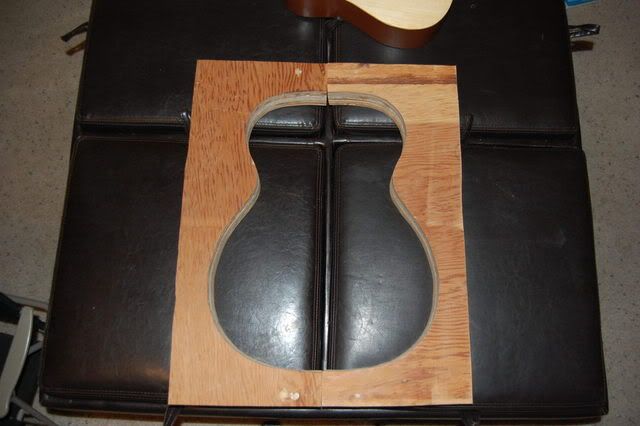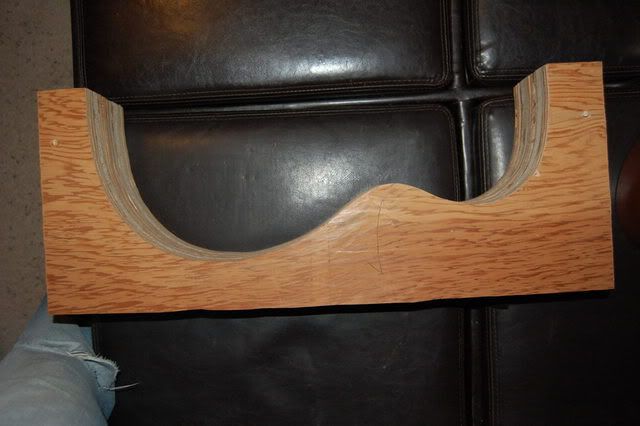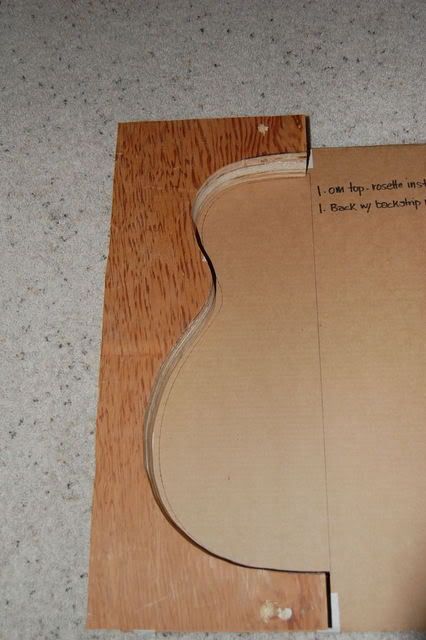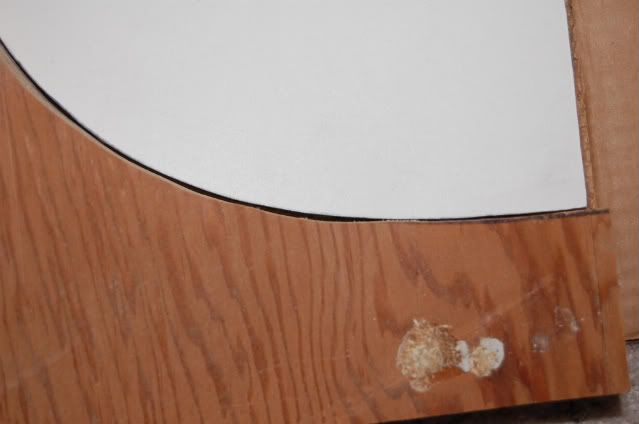Charles,
I did the steps you mentioned w/the exception of gluing the plan to the plywood. I just traced it onto the wood.
Here are a few pictures of the mold.
These 2 photos show that is it fairly symmetrical.

This is the 2nd pic with both sides stacked.

This shows the mold pulled away from the Martin supplied sketch a little to show that it is very close.

This is the type of waves that i am afraid of. You can see the white template against the mold and the dark area between shows the "wavy" area.
